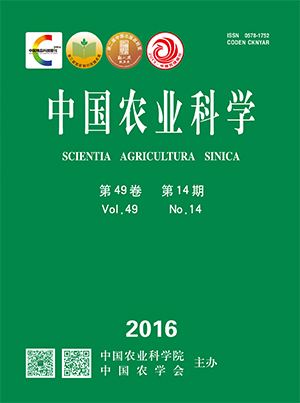-
Relationship Between Rhizosphere Soil Properties and Yield of Maize at Different Nitrogen Levels
- ZHANG Xue-lin, XU Jun, AN Ting-ting, HOU Xiao-pan, LI Chao-hai
-
Scientia Agricultura Sinica. 2016, 49(14):
2687-2699.
doi:10.3864/j.issn.0578-1752.2016.14.004
-
 Abstract
(
893 )
Abstract
(
893 )
 HTML
(
3 )
HTML
(
3 )
 PDF (819KB)
(
1006
)
PDF (819KB)
(
1006
)
 Save
Save
-
References |
Related Articles |
Metrics
【Objective】Making the relationship between rhizosphere soil properties and maize grain yield clear could help managing nitrogen (N) fertilizer application, improving N use efficiency and reducing environmental pollution. 【Method】A field experiment with three N fertilizer treatments (Control: CK; 180 kg N·hm-2:N180; 240 kg N·hm-2: N240; 300 kg N·hm-2: N300 and 360 kg N·hm-2: N360) was established in 2012, and was carried out during maize growth periods in 2012, 2013, and 2014, respectively. Both rhizosphere soil and bulk soil NH4+-N, NO3--N, urease, catalase, pH value, root and aboveground biomass and their N accumulation were measured at critical stages during maize growth periods, and their relationships with maize grain yield were analyzed. 【Result】In comparison with CK, the maize grain yield of four N fertilizer treatments increased by 23.85%, 36.40%, 39.87% and 34.78% for the three annual average, respectively, and their aboveground N accumulation was significantly higher than that of CK. rhizosphere soil NO3--N content of four N fertilizer treatments for their three years average increased by 23.38%, 57.13%, 57.87% and 69.74% in comparison with the CK, and 59.49%, 92.01%, 132.08% and 179.35% for their bulk soil NO3--N content, respectively. With the N fertilizer rate increasing, the bulk soil NH4+-N content increased by 4.27%, 3.51%, 5.04% and 26.26%, respectively. Both rhizosphere soil and bulk soil pH decreased with the increasing of N application rate, their ranges were 4.5-6.7 and 5.5-7.2, and the bulk soil pH value was 5% higher than that of rhizosphere soil. Rhizosphere soil urease activity increased with the N fertilizer rate increasing, and bulk soil urease activities of four N treatments for their three years average increased by 4.02%, 14.73%, 24.55% and 19.64%, respectively, in comparison with the CK. Bulk soil catalase activities decreased with the N fertilizer rate increasing, and reduced by 3.03%, 5.09%, 8.24% and 12.67% in four N fertilizer treatments in comparison with CK. The rhizosphere soil and bulk soil characteristics of CK, N240 and N360 treatments were used to analyze their relationship with maize yield. Pearson correlation analysis showed that rhizosphere soil NO3- -N content at jointing stage; rhizosphere and bulk soil NO3- -N, rhizosphere soil NH4+-N and bulk soil pH at silking stage were all significantly and positively correlated with grain yield. Rhizosphere soil urease enzyme activity and pH at silking stage in 2013 and 2014 were significantly correlated with grain yield, and rhizosphere soil and bulk soil NO3- -N content at maturity stage in 2013 and 2014 were also significantly correlated with the yield. Principal component analysis indicated that rhizosphere soil NO3- -N content, catalase activity, aboveground biomass and their N accumulation at jointing stage; rhizosphere soil and bulk soil NO3- -N content, rhizosphere soil NH4+-N, bulk soil pH, aboveground biomass and their N accumulation at silking stage, and aboveground biomass and their N accumulation at maturity stage were all significantly correlated with grain yield.【Conclusion】All of these results indicated that according to the relationship between rhizosphere soil properties at different stages and maize grain yield, a suitable N fertilizer methods should be taken to ensure the soil available N supply, create a favorable rhizosphere soil environment, improve N utilization efficiency, and increase grain yield.









